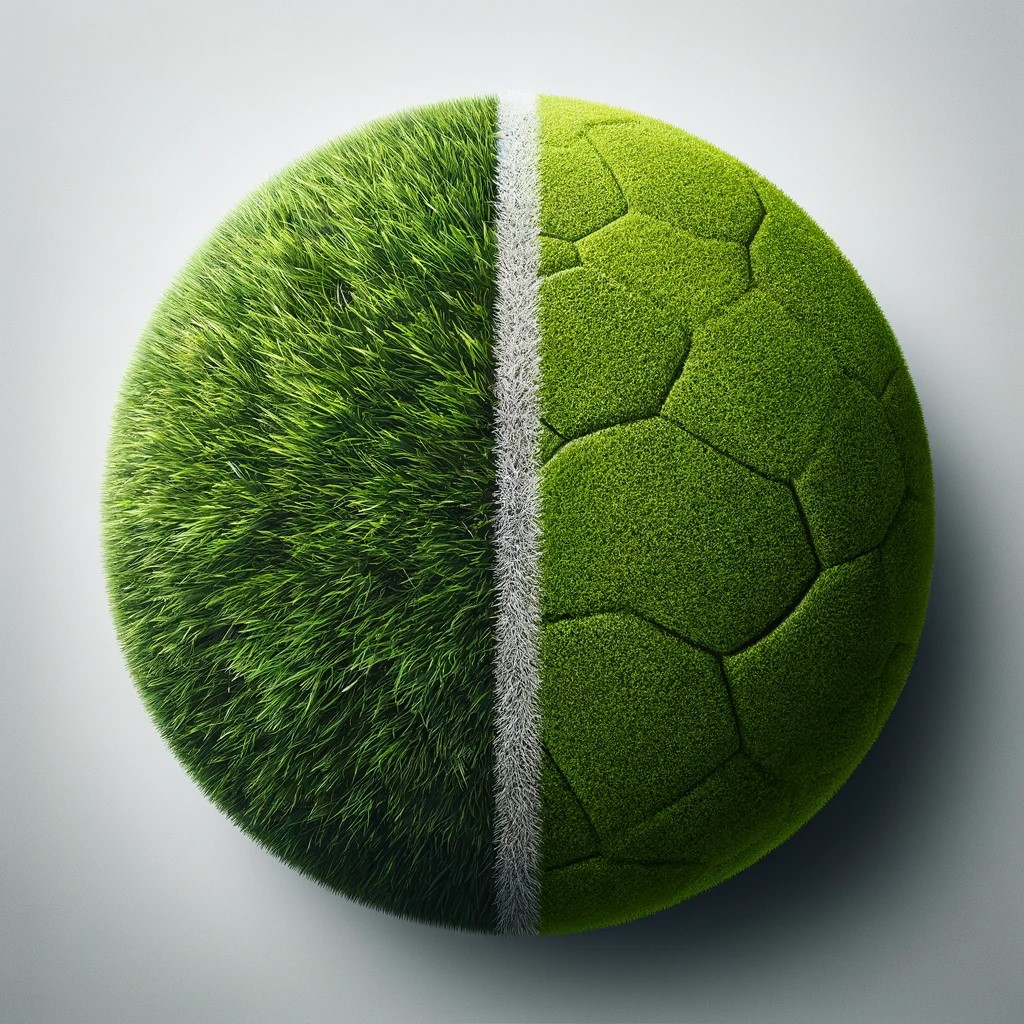Turf vs Grass Soccer Fields: Adapting to British Columbia’s Rainy Seasons with Sefa Soccer Academy
Turf soccer fields have gained immense popularity in the cities of Burnaby, New Westminster, and Coquitlam, largely due to the climatic patterns experienced in British Columbia. With an abundance of rain during the Fall and Winter seasons, natural grass fields often face closures due to flooding, making them impractical for consistent sports activities. Artificial turf fields present a reliable solution to this problem, offering a playable surface regardless of the frequent rainfall. This versatility is embraced by organizations like the Sefa Soccer Academy, which conducts training sessions on both artificial turf and grass fields. Their approach ensures players are well-adapted to varying playing conditions, highlighting the importance of artificial turf fields in maintaining uninterrupted training and playing schedules in the region.
What is Artificial Turf?
Artificial turf is a man-made surface designed to resemble natural grass, primarily made of synthetic fibers like polyethylene, polypropylene, or nylon. It’s used in sports fields, residential lawns, and commercial applications for its durability and low maintenance.
History and Development of Artificial Turf
Originating as “Astroturf” in 1966 at the Houston Astrodome, artificial turf has evolved to closely mimic natural grass in feel and performance, overcoming earlier issues with durability and safety.
Major Stadiums Using Artificial Turf
Stadiums like Tropicana Field and Toronto’s Rogers Centre have adopted artificial turf for its maintenance advantages and durability. However, its adoption varies in professional sports based on league and team preferences.
FIFA’s Stance on Artificial Turf
FIFA’s hesitancy towards artificial turf for World Cup games stems from differences in play dynamics and potential injury risks compared to natural grass. FIFA generally prefers natural grass for its traditional characteristics and safety profile.
Key Artificial Turf Soccer Fields Used by Sefa Soccer Academy
In New Westminster, Coquitlam, and Burnaby, Sefa Soccer Academy thrives, offering extensive training and games. Adapting to British Columbia’s challenging weather, Sefa utilizes several artificial turf fields in these cities. Consequently, here are the prominent fields where Sefa’s vibrant soccer activities unfold:
List of Artificial Turf Soccer fields in New Westminster:
List of Artificial Turf Soccer fields in Coquitlam:
- Charles Best Secondary School
- Centennial Secondary School
- Town Center Soccer fields in Coquitlam
List of Artificial Turf Soccer fields in Burnaby:
- Burnaby Lake Sports Complex West
- North Burnaby Secondary School
- Burnaby Central Secondary School
- Byrne Creek Community School
- Cariboo Hill Oval Track & Turf Soccer Field
Grass Fields
Advantages:
- Natural Feel and Playability: Grass offers a traditional and natural playing experience. The ball moves at a more controlled speed, allowing for better accuracy and technique in passing and shooting.
- Reduced Injury Risks: Natural grass is generally softer and more forgiving, potentially reducing the chance of certain types of injuries, especially those related to falls or sliding.
Disadvantages:
- Maintenance: Grass fields require significant maintenance, including mowing, watering, fertilizing, and reseeding, which can be costly and time-consuming.
- Weather Susceptibility: Grass fields are more vulnerable to weather conditions, potentially leading to cancellations or postponements of games due to rain, extreme cold, or heat.
- Uneven Surfaces: Over time, grass fields can develop uneven surfaces, leading to divots and dips that might increase the risk of injuries.
Artificial Turf
Advantages:
- Consistency and Predictability: Artificial turf offers a uniform surface, eliminating issues like weather-related damage or divots, which is beneficial for consistent play.
- Low Maintenance: Unlike grass, artificial turf doesn’t require regular mowing, watering, or fertilizing, making it more cost-effective over time.
- Weather Resistance: Turf can withstand heavy rain and doesn’t freeze in cold conditions, making it usable in various weather conditions and reducing game cancellations.
Disadvantages:
- Increased Injury Risks: Turf is linked to a higher risk of certain injuries, such as joint issues or turf burns, due to its harder surface and increased abrasiveness.
- Heat Reflection and Surface Temperatures: Turf tends to absorb and reflect heat, leading to higher surface temperatures, which can be uncomfortable for players.
Impact on the Game
- Speed of Play: Artificial turf can cause the ball to move faster and bounce higher, potentially impacting the control and strategy of the game.
- Accessibility in Adverse Weather: Turf fields offer better accessibility during heavy rain, as they drain more effectively and are less likely to become muddy or unusable.
Effects on Young Players and Goalkeepers
Young players and goalkeepers might be more susceptible to certain types of injuries on artificial turf, like abrasions and joint stress, since goalkeepers are often in contact with the ground.
The chemical components of turf could be a concern for goalkeepers due to increased exposure; however, this aspect requires more specific research for conclusive statements.
Players face a higher risk of certain injuries on artificial turf due to its harder and more abrasive surface. Post-game soreness and discomfort are also more common.
The comprehensive study spanning 2016-2019 presents an in-depth look into how different sports are affected by the type of playing surface, specifically comparing injuries on artificial turf versus natural grass. Key findings in American football indicated a noticeable increase in PCL and ACL injuries among NCAA athletes on artificial turf, with Division I athletes being particularly susceptible. The NFL data showed a 16% rise in lower extremity injuries on synthetic turf. In soccer, while the overall rate of injuries remained similar across both surfaces, there was an increased incidence of specific injuries, such as ankle and Achilles injuries, on artificial turf. Rugby research showed comparable overall injury risks on both surfaces but with a variation in the types of injuries sustained. For detailed insights and a full understanding of the study, the complete document is available for reference here
Hybrid Soccer Fields
A hybrid soccer field blends natural grass with artificial elements, providing enhanced durability, better playing conditions, and reduced maintenance requirements. This type of field is gaining popularity in professional sports for its ability to combine the best of both worlds.
Hybrid fields are used in stadiums like Old Trafford and Wembley. These fields feature a combination of natural grass and artificial fibers, offering improved durability and playing conditions.
While hybrid fields offer several benefits, they also present unique maintenance challenges, such as managing the buried fibers and ensuring even usage to prevent wear. Proper maintenance is crucial to extend the field’s longevity and preserve its quality.
The future looks bright for hybrid technology in sports fields. As the technology evolves, these fields are expected to become more common, especially in elite sports venues. The key to their success lies in quality maintenance and using reputable systems.
Hybrid fields potentially offer a more environmentally friendly option compared to fully artificial turf, as they require less synthetic material. However, they still involve some use of plastics and need to be designed with environmental considerations in mind


